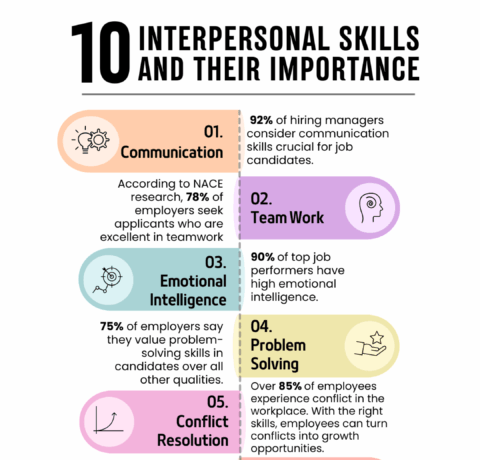The Rise of Social Media Cyberbullying Infographic
Cyberbullying on social media is a growing concern for American teens and is becoming a major problem in America. Cyberbullying occurs when individuals use technology to write aggressive, embarrassing, or hateful messages to/about peers in order to intimidate, harass, shame, and control. Approximately 80% of teens use a smart phone regularly, 92% of teens report going online at least once a day, and 56% go online several times a day. With high online activity, teens either witness cyberbullying, are a victim of it, or become a perpetrator. The Rise of Social Media Cyberbullying Infographic shows that cyberbullying is on the rise, and its impact is often underestimated.
Teen Cyberbullying and Social Media Use on the Rise
Cyberbullies attempt to control, shame, or harass other internet users, often creating one or more fake profiles. Cyberbullies use tactics such as gossip, exclusion, or harassment, but some cyberbullies will resort to cyberstalking or impersonation. Impersonation allows a cyberbully to gain a user’s trust. Once they have the trust, cyberbullies will reveal embarrassing secrets about the other user. While cyberbullying rates are rising, parents concerns are not. Approximately 94% of parents misjudge the rate of conflict occurring on social networking sites and only 7% admit they worry about cyberbullying in general. This creates a problem as cyberbullying can lead to depression and even suicide.
Cyberbullying on Social Media
Today, 71% of teens use more than one social network and have come across cyberbullying in some shape or form. 21% of teens said the main reason they checked social media so often was to make sure nobody was saying mean things about them. The Megan Meier foundation also found:
- 90% of teens active on social media have witnessed cyberbullying.
- 72% of teens report being cyberbullied once or twice in the school year.
- 42% of teens report being cyberbullied in the past year.
- 25% report being cyberbullied more than once
A study also found that “hyper-networking” teens that spend more than 3 hours per school day on social networks are 110% more likely to be cyberbullied.
Popular Social Networks for Cyberbullies
In 2014, Ditch the Label surveyed teens and found which social networks they use most and how often bullying was experienced.
- 75% of teens use Facebook and 54% experienced cyberbullying.
- 66% of teens use YouTube and 21% experienced cyberbullying.
- 43% of teens use Twitter and 28% experienced cyberbullying.
- 36% of teens use Ask.Fm and 26% experienced cyberbullying.
- 24% of teens use Instagram and 24% of those experienced cyberbullying.
- 24% of teens use Tumblr and 22% experienced cyberbullying.
Why Do Teens Cyberbully?
Teens cyberbully for a variety of reasons. Some believe it’s easier to get away with than face-to-face bullying, while others believe teens do it to stay popular or feel powerful.
- 81% of teens say cyberbullying is easier to get away with than in-person bullying
- The National Crime Prevention Council found that 81% of teenagers believe others cyberbully because they think it’s funny
Many teens also bully because of anger, revenge, or as a way to vent frustration. Teens will also cyberbully because they are bored, have too much time on their hands, or an abundance of tech toys. Cyberbullies may also participate to avoid being bullied themselves.
How Do Teens Cyberbully?
Teens may experience or partake in a variety of cyberbullying tactics.
- Exclusion: Teenagers may intentionally exclude others from an online group.
- Cyberstalking: Teens will harass others by constantly sending emails, messages, or tagging others in posts they don’t want to be tagged in.
- Gossip: Teens will post or send cruel messages that damage another’s reputation, relationships, or confidence.
- Outing/Trickery: Cyberbullies will trick another teen into revealing secrets or embarrassing information which the cyberbully will then share online.
- Harassment: Cyberbullies will post or send offensive, insulting, and mean messages repeatedly.
- Impersonation: Cyberbullies may create fake accounts to exploit another teen’s trust. They may also hack into an account and post or send messages that are damaging to the person’s reputation or relationships.
- Cyber Threats: Cyberbullies will threaten or imply violent behavior toward others to make them feel uncomfortable.
- Flaming: Fights online that involve hateful or offensive messages that may be posted to various websites, forums, or blogs.
Tips for Parents
Parents can influence teens’ awareness of inappropriate behavior online or over the phone. 58% of teen internet and cell phone users say their parents have the biggest influence on what they think is appropriate or inappropriate, yet only 1 in 6 parentsare aware when their child is being cyberbullied.
If you would like to prevent your teen from being cyberbullied or feel they may be at risk, bullyingstatistics.org offers some advice:
- Discuss cyberbullying with teens. Explain what actions are appropriate and inappropriate over the internet.
- Open communication with teens and encourage them to tell a parent if cyberbullying is occurring.
- If a teen is being cyberbullied, keep the messages as proof, especially if the messages turn worse.
- Keep the computer in a common area and limit internet access in their room.
- Try blocking the cyberbully from social networks.
Encourage your teenager to take a stand if they witnesses bullying. Also encourage them to:
- Inform a parent, teacher, or adult of the bullying.
- Be kind to the individual being bullied. Include them in activities, send them positive messages, and help them understand they’re not alone.
- Start a Facebook page for students to submit positive acts they witness in school to promote positivity.







You can adjust your cookie preferences here.